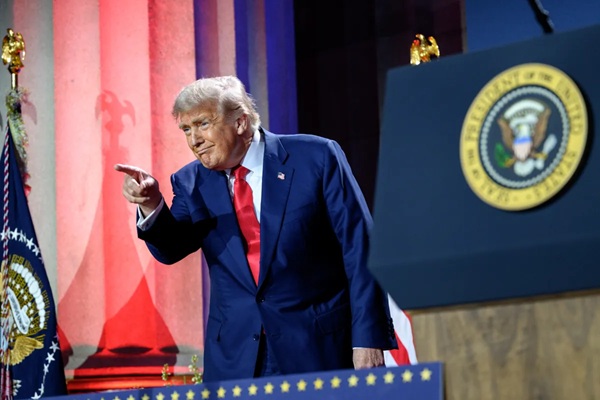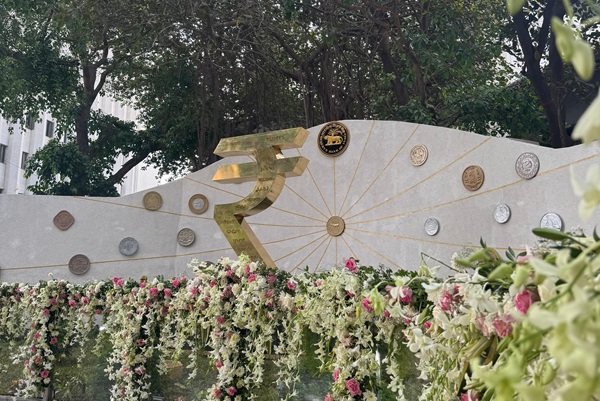.png)

T.K. Arun, ex-Economic Times editor, is a columnist known for incisive analysis of economic and policy matters.
September 20, 2025 at 11:11 AM IST
The Trump administration’s latest salvo against immigration, a $100,000 fee for every H-1B visa granted, would sharply raise costs for American companies, especially for government projects that require on-site workers. It could also curtail Indian enrolment in US universities, reduce the number of Indian IT professionals sent onshore for projects, accelerate automation in IT work enabled by artificial intelligence, and shift some technology jobs back to India, even if not fully offsetting worker displacement in the US.
Companies could try to make greater use of the L1 visas meant to facilitate intra-company transfer of workers from outside the US for short-term work in the US, until the US government closes down that route too. It is also possible that Indian IT services firms would set up new hubs in Mexico and Canada, to house teams that their managers could visit without too much of a hassle when direct supervision becomes necessary.
H-1B visas are used not just by Indian IT services firms, but also in large numbers by American companies. Amazon, Microsoft, Meta, Google and Apple are reportedly the largest users of H-1B visas. They would deploy fewer workers under the scheme. They could either outsource their projects to India, or continue the projects in the US, paying higher salaries.
College enrolment in the US peaked in 2010, at 21 million, and stands at 19 million now, although as high a proportion as 79% of those who complete high school go on to college. However, the proportion pursuing courses in Science, Engineering, Technology or Mathematics, or STEM, is tiny. Trump’s hope of being able to find Americans to replace aliens on H-1B might not materialise.
The biggest impact of the new curb on immigration of educated workers would be on US universities. With President Trump announcing that a fee of $100,000 would be levied on every successful H-1B visa application, the American job market becomes forbidden land for the average student applying for college education in the US, expecting to get hired after graduation.
A new recruit is unlikely to be worth $183,000 in the first year, the minimum cost threshold (minimum salary of $83,000 to qualify to be hired under the H-1B visa scheme, and the new visa fee of $100,000) of making a hire under H-1B, except in some very special cases.
If college education does not open up a path to a high-paying job that would serve to pay off the debt taken on to finance the prized US college degree, fewer would seek admission to a US college. India had overtaken China as the country that sends the largest number of students to study in the US last year. That honour would now be up for grabs.
Australia, Canada and European campuses could attract Indian students. While China and Russia also have technical education that surpasses what would be available at the average Indian counterpart, language could prove a barrier. What the Trump immigration restriction is likely to do is to incentivise the setting up of high-quality engineering colleges in India that command near-American fees in India, where Indian students who fail to get into IITs but seek globally valued technical education and are willing to pay for it. If policy hinders such a development, these institutes might be set up in the United Arab Emirates.
If the governments of Bangladesh and Sri Lanka play smart, they would invite Indian educational entrepreneurs to locate their high-end technical institutions in their country, with a proportion of seats reserved for the local population.
America’s National Centre for Education Statistics offers information on the number of science, technology, engineering, and mathematics (STEM) degrees/certificates conferred by postsecondary institutions. The data we could find was for 2021–22. The picture is unlikely to have changed dramatically.
|
Total STEM |
Non-Americans |
Non-US/total |
|
|
All STEM |
7,89,264 |
1,04,178 |
13.2% |
|
Master's |
1,39,944 |
51,057 |
36.5% |
|
Doctoral |
32,321 |
14,799 |
45.8% |
|
Bachelor's |
4,35,506 |
34,325 |
7.9% |
|
Total |
6,07,771 |
1,00,181 |
16.5% |
If we exclude associate degrees, certificates and so on, the total number of those getting tertiary education in the US STEM subjects is rather small, just 607,771. Of these, non-Americans are 16.5%. The non-American proportion goes up dramatically, when we move up the education level: just about 8% at Bachelor’s, over one-third at Master’s and 46% at the doctoral level.
These numbers translate into the sociological fact of significant brain gain by the US and brain drain by the foreign countries that send their brightest to study in the US and see most of them stay back to be absorbed into American Big Tech, four of the companies now being valued at more than $3 trillion each.
What would happen if the influx of students for Bachelor’s degrees in STEM is curtailed drastically, as would happen if getting a local job after graduation is ruled out? The numbers going on to study at the Master’s or Doctoral levels would come down, even factoring in graduates from non-American universities seeking admission to US universities for their higher education. The tech talent flow would be affected for America’s Big Tech, and their costs would go up, as they bid up the salaries they are prepared to pay for those available.
Countries like India could potentially benefit from such reduced haemorrhaging of their talent to the US. But that is conditional on local industry showing the gumption to start spending on genuine research and development, employing the talent staying back in India.
Will Indian IT services companies be badly hurt by the visa policy? Appearances deceive. The work they have been doing remains unchanged, what would change is how they get the work done: by greater levels of automation, by near-shoring of the workers or greater reliance on teams in India. Costs would go up for providing these services. Considering that any competition to Indian IT services companies would also have to deploy similar strategies, and do not command any significantly superior technology to what Indian firms can summon, there is little reason to believe that they would lose out.




